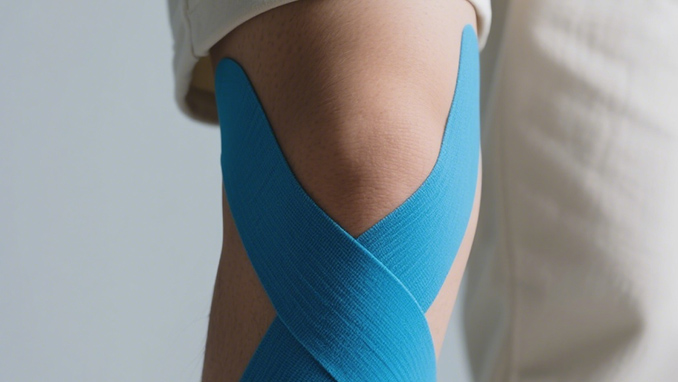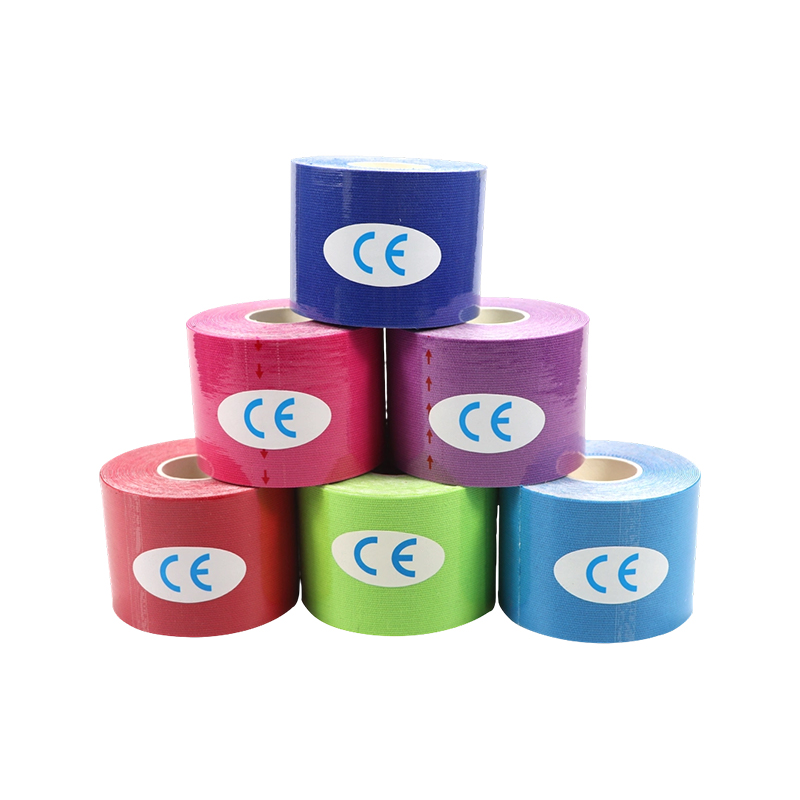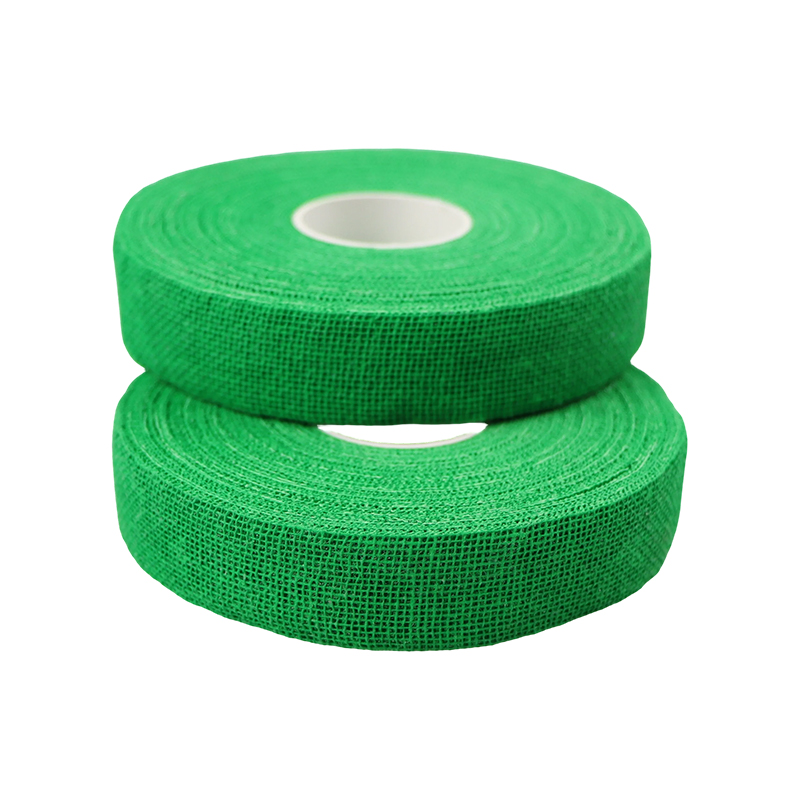

Company

Solutions

Knowledge&Blog

Contact Us
Posted by Qinghong
How to Choose the Right Finger Protection and Sports Underwrap for Active Lifestyles?
Introduction: Mastering Comfort and Protection in Sports and Daily Life
Whether you're an elite athlete pushing physical boundaries or someone managing household chores, proper protection for your hands and joints is crucial for maintaining performance and preventing injuries. The right protective gear serves as a second skin, providing security without compromising mobility or comfort. However, choosing inappropriate products can lead to skin irritation, inadequate protection, or restricted movement, ultimately defeating their purpose. This comprehensive guide explores the science behind effective finger protection and sports underwrap, helping you make informed decisions that align with your specific needs and activities. We'll delve into material technologies, application techniques, and key selection criteria that distinguish superior products from basic alternatives in today's market.
Solving Skin Sensitivity: A Guide to Hypoallergenic Finger Protection
For individuals with sensitive skin, finding appropriate finger protection can be particularly challenging. Standard adhesive bandages often contain latex or aggressive adhesives that trigger allergic reactions, causing redness, itching, and discomfort that can be worse than the original injury. Modern solutions address these concerns through advanced material science and thoughtful design, creating products that protect while respecting skin integrity. Understanding what makes a bandage truly skin-friendly requires examining its composition, adhesive properties, and breathability characteristics that work in harmony with your skin's natural biology.
Why Traditional Bandages Fail Sensitive Skin
Conventional bandages frequently utilize rubber-based adhesives and non-breathable backing materials that create an occlusive environment perfect for irritation development. The strong bond necessary for staying power often comes at the expense of gentle removal, leading to what medical professionals describe as "traumatic débridement" where skin layers are damaged during bandage changes. Additionally, the moisture accumulation beneath standard bandages softens the epidermis, making it more vulnerable to mechanical damage during removal. This creates a vicious cycle where the protection itself becomes a source of skin problems.
- Aggressive acrylic adhesives that bond too strongly to delicate skin
- Non-breathable plastic backings that trap moisture and heat
- Latex components that trigger allergic reactions in susceptible individuals
- Rigid materials that don't flex naturally with finger movement
Key Features of a Truly Skin-Friendly Finger Bandage
An ideal highly adhesive finger bandage for sensitive skin achieves the seemingly contradictory goals of secure attachment and painless removal through sophisticated material engineering. The solution lies in advanced hydrogel adhesives that create strong yet gentle bonds, microporous backings that allow skin respiration, and latex-free constructions that eliminate common allergens. These features work together to provide reliable protection without compromising skin health, making them suitable for extended wear and frequent changes when necessary for wound care management.
| Feature | Benefit for Sensitive Skin | Material Examples |
| Hypoallergenic Adhesive | Minimizes risk of contact dermatitis and allergic reactions | Medical-grade silicone, acrylic hydrogel |
| Breathable Backing | Allows moisture vapor transmission preventing maceration | Polyurethane film, non-woven fabric |
| Stretchable Construction | Moves with skin reducing shear forces and irritation | Elastic non-woven, four-way stretch materials |
| Pain-Free Removal | Maintains adhesive integrity until gentle lifting initiates release | Microsphere technology, z-axis adhesion |
The Role of Self Adhesive Free Designs for Delicate Skin
For those with extreme sensitivity or known adhesive allergies, self adhesive free underwrap for sensitive skin provides an innovative alternative that eliminates direct adhesive contact altogether. These products utilize proprietary foam or textile technologies that cling to themselves or employ minimal, strategically placed adhesive zones away from direct skin contact. This approach is particularly beneficial for chronic wound management, dermatological conditions like eczema, or repeated applications where adhesive buildup could become problematic. The absence of continuous adhesive coverage significantly reduces the risk of irritation while maintaining secure positioning.
- Eliminates adhesive contact with compromised or sensitive skin areas
- Allows for frequent repositioning without losing effectiveness
- Reduces residue buildup that can trap bacteria and irritants
- Ideal for long-term therapeutic applications requiring daily dressing changes
Beyond the Court: Everyday Applications of Protective Gear
While sports applications often receive the most attention, quality protective gear delivers tremendous value in daily activities where hands are frequently exposed to moisture, friction, and contaminants. From food preparation and cleaning to DIY projects and gardening, our hands encounter numerous challenges that can benefit from targeted protection. Understanding how specialized gear performs in these varied contexts helps users maximize their investment while maintaining hand health and functionality across all life activities, not just athletic pursuits.
The Ultimate Solution for Wet Work: Waterproof Finger Protection
A waterproof finger cover bandage for dishwashing represents a specialized category of protection engineered to create an impenetrable barrier against water, detergents, and food residues. Unlike standard bandages that become soggy and lose adhesion when wet, these utilize advanced polymer films sealed with waterproof adhesives that maintain integrity even during prolonged water exposure. This capability is crucial not just for comfort but for preventing wound contamination and promoting proper healing in moist environments. The technology behind these products has evolved significantly from basic plastic covers to sophisticated multi-layer constructions that balance impermeability with breathability.
- Maintains a dry wound environment despite external moisture exposure
- Prevents soap and detergent penetration that can irritate wounds
- Withstands mechanical stress from scrubbing and handling wet objects
- Specialized adhesives that bond stronger when exposed to moisture
Other Household and Professional Uses You Haven't Considered
The applications for quality finger protection extend far beyond basic first aid scenarios. Modern protective products serve diverse needs across various activities and professions, offering targeted solutions that enhance performance, safety, and comfort. Recognizing these varied applications helps users understand the full value proposition of investing in quality protection rather than settling for basic alternatives that may fail in specialized situations.
| Application | Protection Need | Ideal Product Features |
| Gardening | Soil bacteria, thorns, moisture, friction | Breathable waterproofing, textured grip |
| Craft & Hobbies | Paper cuts, glue, paint, repetitive friction | Precision fit, chemical resistance |
| Musical Instruments | String pressure, blisters, sweat | Ultra-thin profile, moisture absorption |
| Electronics Repair | Static electricity, small cuts, component contact | Anti-static materials, sensitive touch preservation |
The Athlete's Edge: Optimizing Taping with the Right Underwrap
Athletic taping represents a cornerstone of sports medicine, providing structural support, enhancing proprioception, and preventing injuries during high-intensity activities. However, the effectiveness of any taping application depends fundamentally on the foundation layer—the underwrap—that sits between tape and skin. A proper breathable foam underwrap for kinesiology tape serves multiple crucial functions: protecting the skin from adhesive irritation, enhancing comfort during movement, and improving tape adhesion through optimal surface conditions. Understanding these interactions allows athletes and practitioners to maximize the benefits of their taping protocols while minimizing potential drawbacks.
Why Good Breathability is Non-Negotiable in Sports
Athletic activities generate substantial body heat and perspiration, creating a challenging environment for any materials in direct skin contact. A good breathability foam under wrap addresses this through open-cell foam structures that allow efficient moisture vapor transmission while maintaining cushioning properties. This breathability prevents the accumulation of sweat beneath the tape, which can lead to skin maceration, reduced adhesive performance, and uncomfortable slippage during critical moments. The physiological importance extends beyond comfort to maintaining skin integrity over extended wear periods, especially during multi-day competitions or training sessions.
- Prevents heat buildup that can affect muscle temperature regulation
- Reduces sweat accumulation that compromises adhesive bonds
- Maintains healthier skin condition during extended wear
- Enhances overall comfort, promoting better athletic focus
A Step-by-Step Guide: How to Apply Foam Underwrap for Badminton
Badminton places unique demands on the wrist and fingers, requiring precise taping that balances support with unrestricted movement. Learning how to apply foam underwrap for badminton correctly ensures your protective taping performs optimally throughout matches and training sessions. The process begins with skin preparation and follows specific wrapping techniques that address the sport's characteristic rapid directional changes, overhead motions, and delicate grip adjustments. Proper application not only enhances performance but significantly extends the functional duration of your taping job.
Preparing the Skin and Wrist
Effective underwrap application begins with proper skin preparation that creates an ideal surface for both the underwrap and subsequent tape layers. The skin should be clean, dry, and free from oils, lotions, or perspiration that might compromise adhesion. For areas with significant hair, clipping (not shaving) improves comfort during removal without creating micro-abrasions that could become irritated. Some athletes benefit from a thin layer of skin prep solution that enhances adhesion while protecting the skin, particularly important in high-sweat environments like competitive badminton.
- Cleanse with alcohol wipe to remove oils and ensure complete dryness
- Inspect skin for existing irritations, cuts, or blisters that need addressing
- Apply skin prep solution if sweating is anticipated during activity
- Position joint in neutral functional position before beginning application
Wrapping Techniques for Maximum Mobility and Support
The actual application of underwrap requires attention to tension, overlap, and anatomical alignment to create an effective foundation for athletic tape. Unlike simple bandaging, athletic underwrap application follows specific protocols that balance even coverage with strategic reinforcement at high-stress areas. For badminton players, particular attention should focus on the wrist's dorsal aspect and the base of the thumb, where racket forces transfer most significantly. The goal is consistent, smooth layers without wrinkles or excessive tightness that might restrict circulation or natural movement patterns.
| Technique | Purpose | Common Mistakes |
| Anchor Points | Create stable start/end points away from joint creases | Placing anchors directly over moving joints |
| Spiral Patterns | Even distribution with consistent 50% overlap | Gapping between rounds creating pressure points |
| Tension Control | Secure but non-restrictive support | Over-tightening causing circulation issues |
| Anatomical Contouring | Conforms to body structures without wrinkles | Ignoring natural shapes creating bulk and discomfort |
Making an Informed Choice: Your Checklist for Purchase
Selecting the right protective products requires balancing multiple factors including materials, intended use, duration of wear, and individual sensitivities. This decision-making process benefits from a systematic approach that evaluates both the obvious and subtle characteristics that distinguish adequate products from exceptional ones. By considering these elements in relation to your specific needs, you can invest in protection that truly enhances your activities rather than simply serving as a basic covering. The following criteria provide a framework for making informed selections across different product categories and price points.
- Identify your primary need: wound protection, friction reduction, or sports support
- Consider wear duration: brief applications versus extended multi-day use
- Evaluate environmental factors: water exposure, sweat, temperature extremes
- Assess sensitivity history: known allergies to adhesives, latex, or specific materials
- Determine mobility requirements: full range of motion versus restricted movement
- Review application frequency: occasional use versus daily dressing changes
Manufacturing Excellence Behind Quality Protection
The development of advanced protective products relies on sophisticated manufacturing capabilities and stringent quality control systems. Industry leaders like Shanghai Qinghong Healthcare Products Co., Ltd. and Jiangsu Qinghong Healthcare Products Co., Ltd. leverage extensive research and development resources to create innovative solutions that address evolving user needs. With specialized facilities focusing on high-quality elastic bandages, athletic tape, and self-adhesive bandages, these manufacturers combine material science expertise with precision engineering to deliver products that perform consistently across diverse applications. The integration of comprehensive quality management systems ensures every product meets exacting standards for safety, efficacy, and reliability that healthcare professionals and consumers have come to expect.
FAQ
How long can I wear a highly adhesive finger bandage?
Most highly adhesive finger bandages designed for sensitive skin can safely remain in place for 24-48 hours, provided the wound remains clean and dry. However, several factors influence optimal wear time: the nature of the wound (healing surgical incision versus minor abrasion), your activity level, and environmental conditions. For wounds producing moderate exudate, more frequent changes (every 12-24 hours) may be necessary to prevent maceration of surrounding skin. Modern advanced formulations maintain their adhesive properties and breathability throughout the recommended wear time, but should be changed immediately if edges lift, moisture accumulates underneath, or signs of irritation develop around the application site.
Can I use foam underwrap without athletic tape?
While foam underwrap is specifically designed as a protective layer beneath adhesive tape, it can provide limited benefits when used alone in specific situations. The cushioning properties offer mild protection against friction and impact, making it temporarily useful for preventing blisters or protecting existing skin irritations. However, without the structural support of overlying tape, underwrap alone provides minimal joint stabilization and will not stay securely in place during vigorous activity. For badminton players, the standalone use might be appropriate for protecting a sensitive area on the finger from racket friction during brief practice sessions, but should not be relied upon for actual match play or meaningful structural support.
What's the difference between cotton yarn and waterproof finger bandages?
Cotton yarn finger protection bandage and waterproof versions represent fundamentally different approaches to finger protection. Traditional cotton yarn bandages prioritize breathability and comfort through natural fiber construction, effectively absorbing minimal moisture while allowing excellent air circulation. They're ideal for dry environments and minor abrasions where ventilation supports healing. Conversely, waterproof finger cover bandages create an impermeable barrier using polymer films and specialized adhesives, preventing water, bacteria, and contaminants from reaching the wound. This makes them essential for wet environments, food handling, and wound types that require maintained moisture balance. The choice depends entirely on your specific activity environment and protection requirements.
How do I remove a strongly adhesive bandage without pain or skin damage?
Pain-free removal of highly adhesive finger cover bandage products relies on technique rather than force. Begin by gently lifting one corner slowly parallel to the skin rather than pulling upward. If resistance is significant, apply medical-grade adhesive remover or common household oils (mineral oil, baby oil) to the adhesive interface and allow 30-60 seconds to break the bond. Another effective method involves saturating the bandage with warm water, which can weaken certain adhesive formulations. For sensitive skin, consider stretching the bandage laterally rather than pulling directly away, which changes the angle of removal and typically causes less discomfort. Always support the surrounding skin with your free hand to minimize traction on delicate tissues during the removal process.
Is foam underwrap reusable for multiple applications?
Traditional foam underwrap is designed as a single-use product for several important reasons. The compression of foam cells during initial application permanently alters their structure, diminishing the cushioning properties upon reapplication. More significantly, once removed, the material cannot be reliably reapplied with consistent tension or smoothness, potentially creating pressure points or uneven support. From a hygiene perspective, microorganisms from the skin become embedded in the foam matrix during wear, creating infection risk upon reuse. While some manufacturers offer specialized reusable underwrap alternatives, standard athletic foam underwrap should be replaced with each new taping session to ensure optimal performance, protection, and hygiene.
NEWS











 English
English  русский
русский  Français
Français  Español
Español  عربى
عربى 





 ENG
ENG

